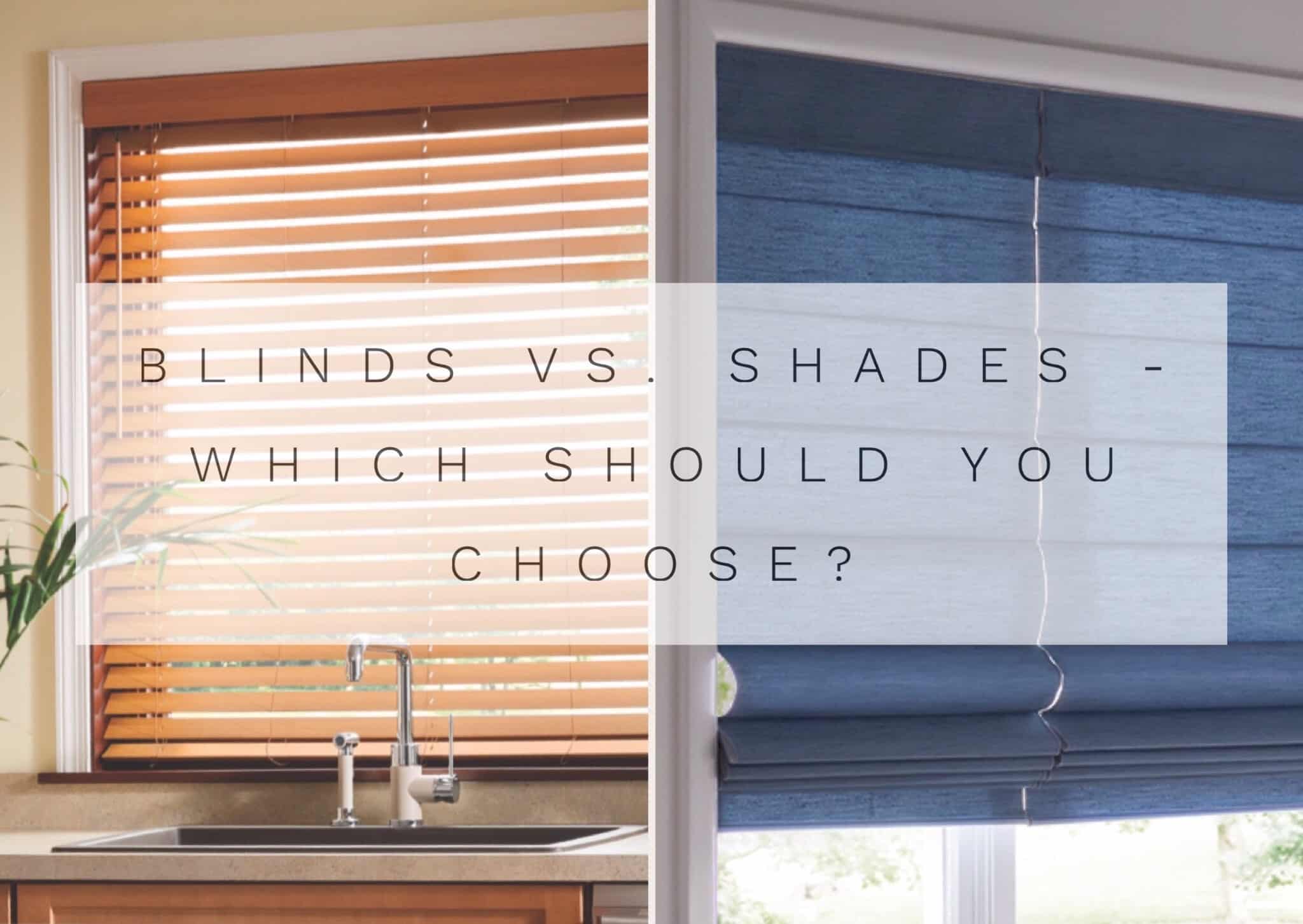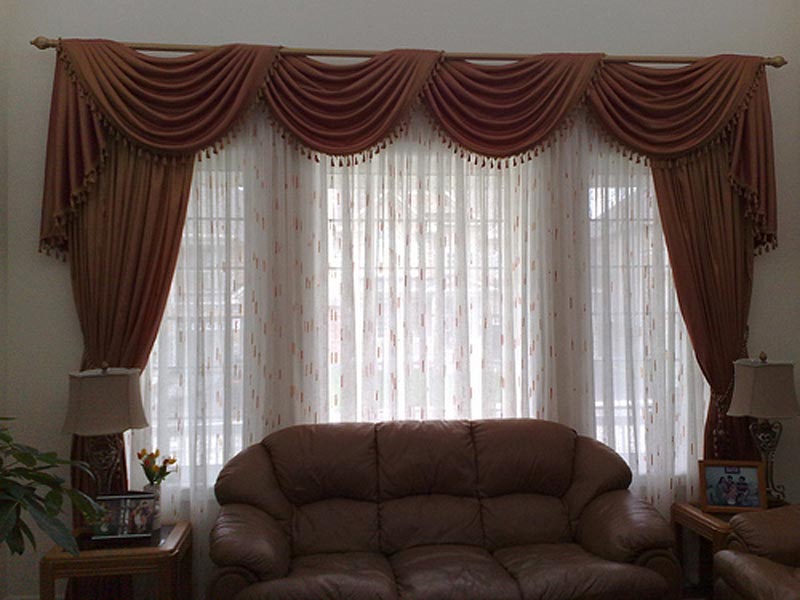Are you confused about whether blinds or shades are the right window treatment for your home? Look no further! In this comprehensive guide, we will break down the differences between blinds and shades, helping you make an informed decision.
Blinds are a popular choice for homeowners who value control over light and privacy. With slats that can be adjusted, you can easily regulate the amount of light entering your space while still maintaining privacy. They also come in a variety of materials, such as wood, aluminum, or vinyl, allowing you to match your home’s aesthetic.
On the other hand, shades offer a softer and more streamlined look to your windows. Made from a single piece of fabric, they can be rolled up or down to let in the desired amount of light. Shades come in different opacities, ranging from sheer to blackout, giving you the option to filter or block out light entirely.
Whether you prioritize functionality or aesthetics, this guide will help you find the perfect window treatment for your home. Let’s dive in!

Understanding blinds and shades: What are they and how do they differ?
Blinds and shades are both popular window treatment options, but they differ in terms of functionality and aesthetics. Blinds are made up of horizontal or vertical slats that can be adjusted to control the amount of light entering the room. On the other hand, shades are made from a single piece of fabric that can be rolled up or down to let in or block out light.
Blinds offer a high level of control over light and privacy. With slats that can be adjusted, you can easily regulate the amount of light entering your space while still maintaining privacy. Additionally, blinds come in a variety of materials, such as wood, aluminum, or vinyl, allowing you to match your home’s aesthetic.
Shades, on the other hand, offer a softer and more streamlined look to your windows. Made from a single piece of fabric, they can be rolled up or down to let in the desired amount of light. Shades come in different opacities, ranging from sheer to blackout, giving you the option to filter or block out light entirely.
Pros and cons of blinds
Blinds have several advantages that make them a popular choice for homeowners. One of the main benefits of blinds is their ability to control light and privacy. With the adjustable slats, you can easily regulate the amount of light entering a room, providing you with the perfect balance of natural light and privacy.
Another advantage of blinds is their durability. Blinds made from materials such as wood or aluminum are known for their sturdiness and long lifespan. They can withstand everyday wear and tear, making them a great investment for your home.
However, there are also some drawbacks to consider when it comes to blinds. One of the main disadvantages is the potential for dust build-up. The slats can easily collect dust, requiring regular cleaning to maintain their appearance. Additionally, blinds may not be the best option for rooms with young children or pets, as the cords can pose a safety hazard.
Pros and cons of shades
Shades offer a different set of advantages compared to blinds. One of the main benefits of shades is their soft and streamlined look. They add a touch of elegance to any room and can complement a variety of interior design styles.
Another advantage of shades is their ability to provide insulation. Depending on the material and opacity, shades can help regulate the temperature in a room by blocking out heat or cold. This can result in energy savings and increased comfort.
However, shades also have some drawbacks to consider. One potential disadvantage is the lack of control over light and privacy compared to blinds. While shades can be rolled up or down to let in or block out light, they do not offer the same level of adjustability as blinds.
Factors to consider when choosing between blinds and shades
When deciding between blinds and shades, there are several factors to consider. One important factor is the level of control you want over light and privacy. If you value precise control, blinds may be the better option for you. On the other hand, if you prefer a softer look and don’t mind sacrificing some adjustability, shades may be the right choice.
Another factor to consider is the aesthetic appeal. Blinds come in a variety of materials, colors, and finishes, allowing you to match them to your home’s decor. Shades, on the other hand, offer a more streamlined and elegant look that can enhance the overall ambiance of a room.
The location of the windows is also an important consideration. For example, if you have windows facing a busy street or a neighbor’s house, blinds may provide the privacy you need. If the windows are in a room where you want to maximize natural light, shades may be a better option as they can be rolled up completely to let in sunlight.
Different types of blinds and their features
Blinds come in various types, each with its own unique features. Here are some popular types of blinds:
1. Venetian Blinds: These blinds have horizontal slats that can be tilted to control light and privacy. They are available in a wide range of materials, including wood, aluminum, and vinyl.
2. Vertical Blinds: Vertical blinds have vertical slats that can be rotated to adjust the amount of light entering the room. They are often used for sliding glass doors or large windows.
3. Roman Blinds: Roman blinds are made from fabric and have horizontal folds. They can be raised or lowered to control light and privacy.
4. Roller Blinds: Roller blinds are made from a single piece of fabric that can be rolled up or down. They are available in various opacities, from sheer to blackout.
5. Pleated Blinds: Pleated blinds have a pleated fabric that can be raised or lowered to control light. They are a popular choice for conservatories or skylights.
Different types of shades and their features
Shades also come in different types, each with its own unique features. Here are some popular types of shades:
1. Roller Shades: Roller shades are made from a single piece of fabric that can be rolled up or down. They are available in various opacities, from sheer to blackout.
2. Roman Shades: Roman shades are made from fabric and have horizontal folds. They can be raised or lowered to control light and privacy.
3. Cellular Shades: Cellular shades have a honeycomb structure that traps air, providing insulation and energy efficiency. They are available in various opacities and can be cordless for child safety.
4. Pleated Shades: Pleated shades have a pleated fabric that can be raised or lowered to control light. They are a popular choice for conservatories or skylights.
5. Solar Shades: Solar shades are designed to block harmful UV rays while still allowing you to enjoy the view outside. They are available in various opacities and can help reduce glare.
Choosing the right window treatment for different rooms in your home
When it comes to choosing the right window treatment for different rooms in your home, it’s important to consider the specific needs of each space. Here are some recommendations:
1. Living Room: Blinds or shades with adjustable slats or opacity control are ideal for the living room. This allows you to regulate light and privacy based on your preferences.
2. Bedroom: For the bedroom, consider blackout blinds or shades that can block out light completely. This can help create a peaceful and restful environment for better sleep.
3. Kitchen: Blinds or shades made from moisture-resistant materials, such as aluminum or vinyl, are a good choice for the kitchen. They can withstand cooking steam and are easy to clean.
4. Bathroom: Moisture-resistant blinds or shades are also recommended for the bathroom. Consider options that are easy to clean and can withstand high humidity.
5. Home Office: Blinds or shades with adjustable slats or opacity control are ideal for the home office. This allows you to control glare on your computer screen while still allowing natural light.
How to properly measure your windows for blinds or shades
Properly measuring your windows is crucial to ensure that your blinds or shades fit correctly. Here’s a step-by-step guide to measuring your windows:
1. Width: Measure the width of the window opening at the top, middle, and bottom. Take the smallest measurement as your width.
2. Height: Measure the height of the window opening from the top to the sill or desired length. If you want your blinds or shades to extend beyond the sill, measure to that point.
3. Depth: Measure the depth of the window frame to determine if there is enough space for the blinds or shades to be mounted inside the frame.
4. Outside Mount: If you prefer an outside mount, measure the width and height of the area you want to cover. Add extra inches for overlap and coverage.
Installation and maintenance tips for blinds and shades
Installing blinds or shades can be a straightforward process if you follow the instructions provided. Here are some general installation tips to keep in mind:
1. Inside Mount vs. Outside Mount: Determine whether you want to install the blinds or shades inside or outside the window frame. This will affect the measurements and mounting brackets needed.
2. Tools: Gather the necessary tools for installation, such as a drill, screws, and a level. Follow the manufacturer’s instructions for specific tool requirements.
3. Safety Precautions: When installing blinds with cords, ensure that they are properly secured and out of reach of children or pets. Consider cordless options for increased safety.
4. Cleaning: Regularly clean blinds or shades to keep them looking their best. Use a soft cloth or duster to remove dust from slats or fabric. For stains, spot clean with a mild detergent and water.
Conclusion: Making the final decision on blinds vs. shades
Choosing between blinds and shades ultimately comes down to personal preference and the specific needs of your space. Consider factors such as control over light and privacy, aesthetic appeal, and the location of your windows.
Blinds offer precise control and durability, while shades provide a softer and more streamlined look. By understanding the pros and cons of each option and considering the factors mentioned, you can make an informed decision that suits your style and functional requirements.
So, whether you prioritize functionality or aesthetics, this comprehensive guide has provided you with the information you need to find the perfect window treatment for your home. Now, go ahead and transform your space with blinds or shades that enhance its beauty and functionality.
Remember, if you’re still unsure about which option to choose, consult with a professional window treatment specialist who can provide expert advice tailored to your specific needs.
To know more about the Blinds in Aldie, VA and Fauxwood blinds in Chantilly,VA , and to make your window coverings more beautiful and functional, contact us today. We are the window treatment experts!
Call us now (703) 856-3190 or click here to contact us.

